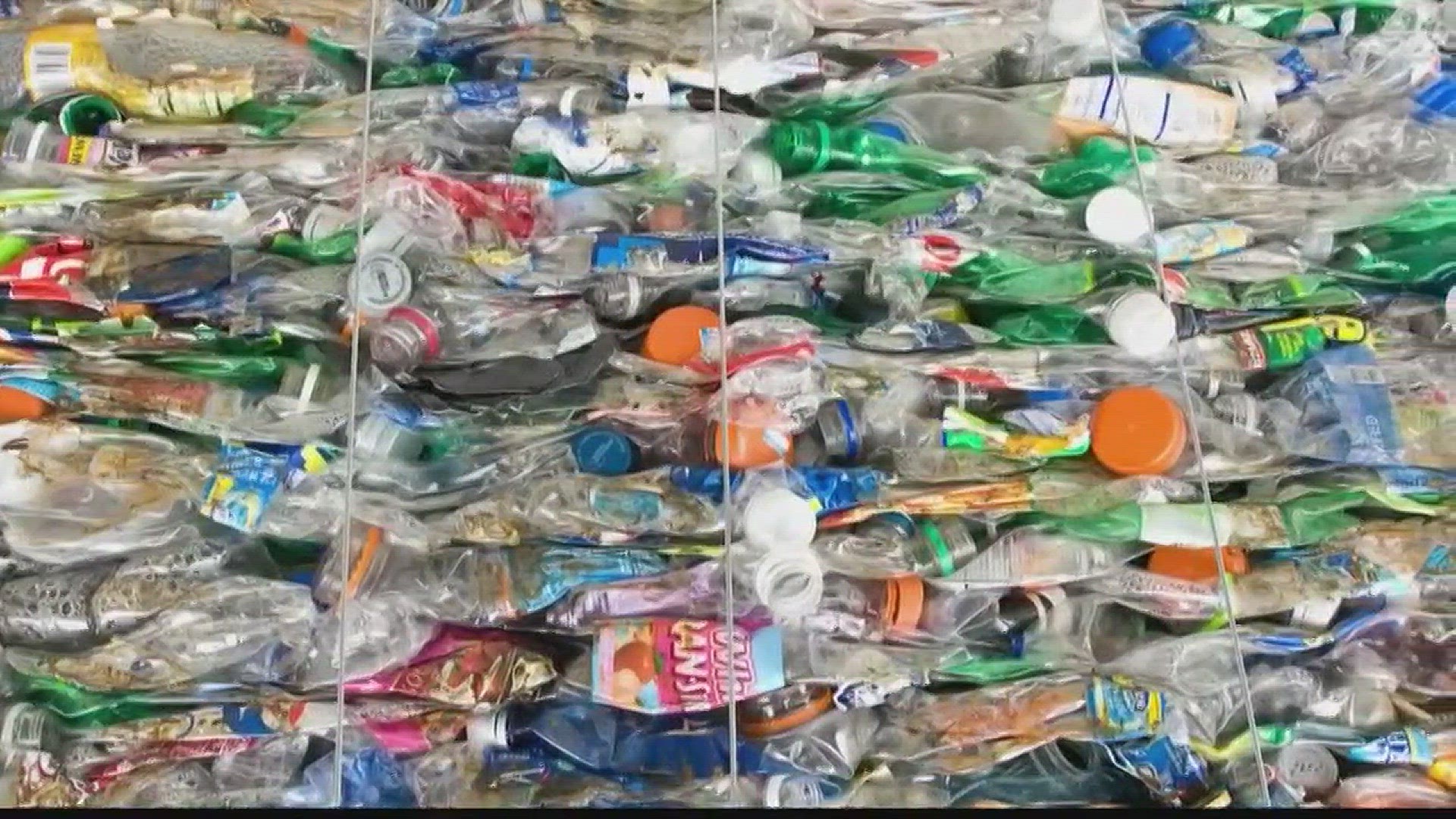One billion elephants weigh as much as the plastic humans have produced since the 1950s. Of that, Greenpeace reports only 9 percent has been recycled.
While plastic has helped build industries and made products more affordable, it has been considered pervasive to our oceans and waterways due to its lower density mass.
It can easily be blown around, which is why plastic makes up a large portion of the notorious Great Pacific Garbage Patch. Marine animals have consumed plastic in waterways, and waste has damaged their ecosystems food chains.
Somewhere between 4.8 and 12.7 million tons of plastic find their way into the ocean every single year, according to 2015 data from the journal Science.
Marine animals have been known to mistake plastic for food, which can block their intestinal tracts and kill them, or make them feel full when they are not. Other marine animals have been getting caught up in fishing lines, nets, and plastic litter. Captain Charles Moore, who discovered the garbage patch in 1997, found that more than 1/3 of the fish necropsies he performed had ingested polluted plastic fragments.
The Great Pacific Garbage Patch
The Great Pacific Garbage Patch stands as a grotesque trophy and reminder of the amount of plastic and garbage that makes its way into our ocean every year.
A new scientific study shows the patch weighs around 87,000 tons, or more than 43,000 cars, and consists of more than 1.8 trillion pieces of plastic.
Five major systems of ocean currents, or "gyres" from California, the North Equatorial, Kuroshiro, and North Pacific collectively bind the trash in the North Pacific Subtropical Gyre, according to National Geographic.
A Columbia University report says the patch predominately consists of trash from North America's coast along with Japan and other Asian countries. It has become a haven for scientists to study for its enormity and concentrations of trash.
So where does the plastic come from?
According to National Geographic, oceanographers and ecologists discovered 70 percent of marine debris sinks to the bottom of the ocean, which is why the garbage patch consists mostly of microplastics and fishing gear.
Researchers discovered 80 percent of the debris in the patch comes from "land-based activities." This typically includes plastics blown into rivers from the streets, trash cans or landfills. Microplastics also get into the waterways, typically through runoffs from products like toothpaste and facial scrubs.
The Ocean Conservancy's 2010 report, Trash Travels, claims 60 percent of marine debris in 2009 was made of "disposable" items, most commonly cigarettes, plastic bags, food containers, bottle caps and plastic bottles.
So where does the other 20 percent of the marine debris originate?
National Geographic says it comes from "boaters, offshore oil rigs, and large cargo ships" dumping the debris in the water or losing the debris along the way. Of this specific debris, 79,000 tons are fishing nets alone. Shipping containers have also been known to contribute more 'unusual' debris, such as computer monitors and LEGOs.
Other than the garbage patch, where does the plastic go?
The Sea Education Association (SEA) expedition released its 22-year study, between 1980 and 2008, on plastic pollution in the western North Atlantic and the Caribbean Sea.
The study observed the number of plastic pollutants found in the systems of surface plankton in the region. More than 60 percent were found to have plastic.
The greatest portion of plastics was discovered in the North Atlantic Gyre, consisting of the Sargasso Sea within the Atlantic Ocean.
The average concentration of the samples found was roughly 20,300 pieces per square kilometer.
The study discovered a fourfold increase in discarded plastic in the U.S. between 1980 and 2008. Even with the increase, the concentration of debris hasn't seemed to increase, posing the interesting question of where the rest ends up.
Researchers believe at least some of the plastic is being consumed by animals, and the rest either floats to the bottom of the ocean or breaks down into microplastics, which can be harder to measure.
What other people are reading right now:
►Make it easy to keep up-to-date with more stories like this. Download the 10News app now.
Have a news tip? Email desk@wtsp.com, or visit our Facebook page or Twitter feed.

